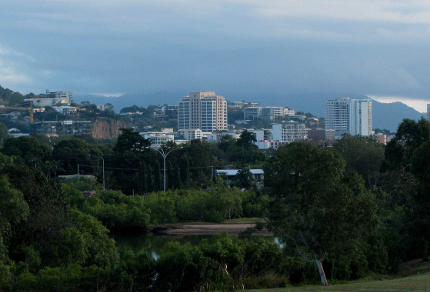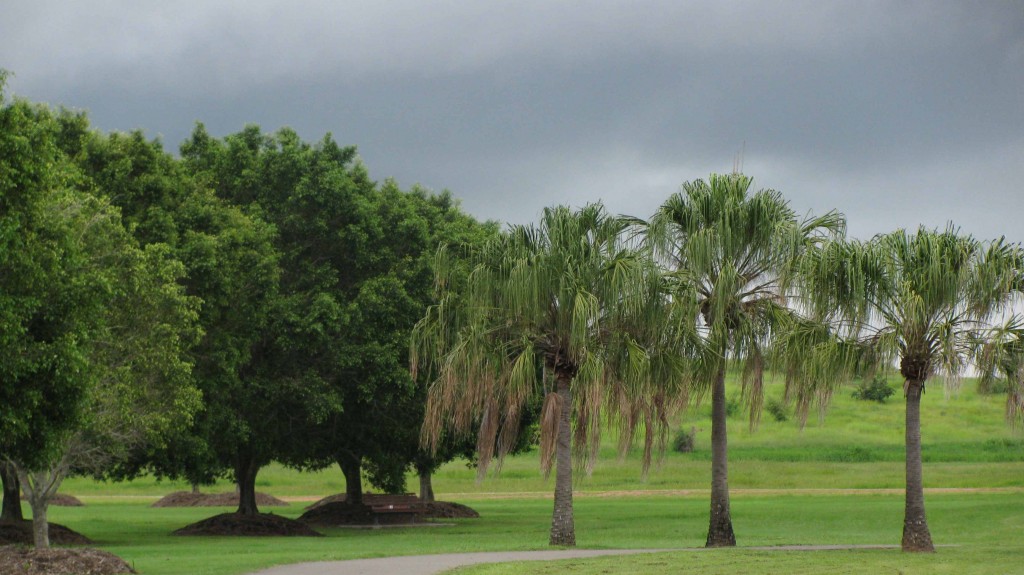
Bicentennial Park (© Magi Nams)
Although it’s said that familiarity breeds contempt, I’d say it more commonly breeds a lack of appreciation. This morning, I abandoned plans to cycle along the parkway because of impending downpours, and instead walked beneath my umbrella to Bicentennial Park. I’ve strolled and run through this open green space numerous times, enjoying its birds but always thinking it far less exotic and interesting than the more established Queens and Anderson Park Botanical Gardens, the Palmetum Park, and the southeastern strip of the Ross River Parkway, the last with its glorious rain trees and thick-crowned mangoes shading the path and lotus lilies blooming on the river.
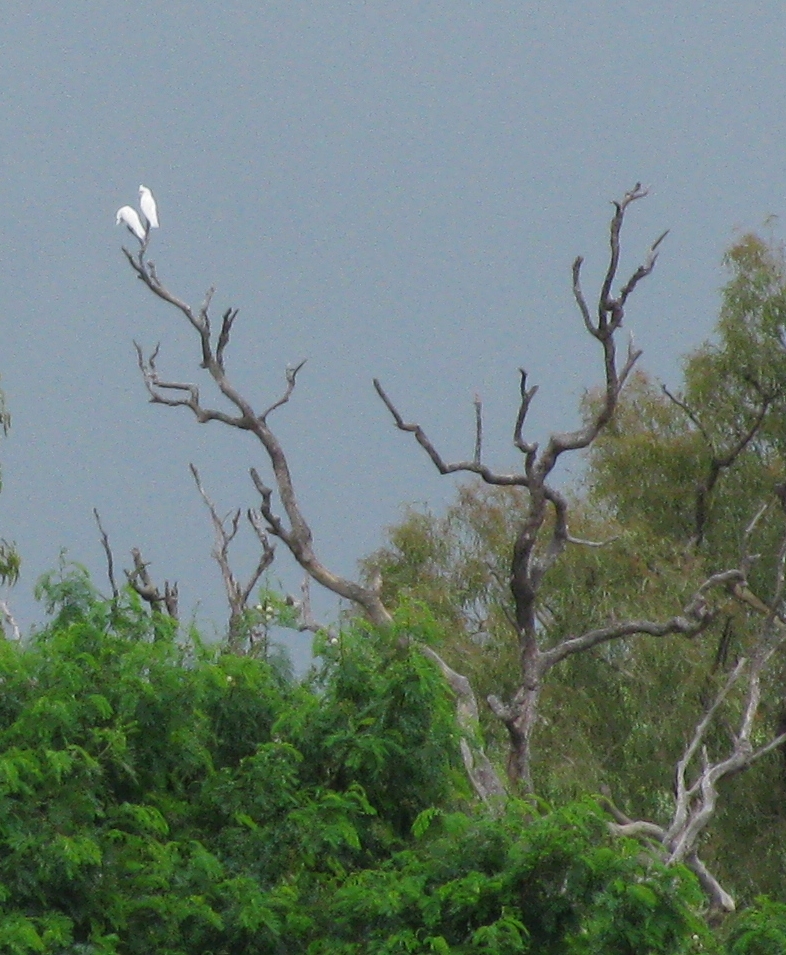
Sulphur-crested Cockatoos on Dead Tree (© Magi Nams )
However, today, I discovered that beauty is where you look for it. I also discovered that Bicentennial Park’s greatest attribute is not what it contains, but the views it offers. Some of these views were of birds – sulphur-crested cockatoos perched in a dead tree on the far side of the river, a male cisticola singing his heart out atop a shrub on the summit of the mound in the centre of the park, a family of masked lapwings in long grass, the parents taking to the air at my approach and flying straight at my face before banking steeply and circling for another attack.
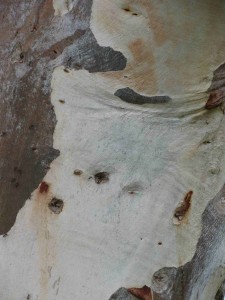
Wrinkled Eucalyptus ‘Skin’ (© Magi Nams)
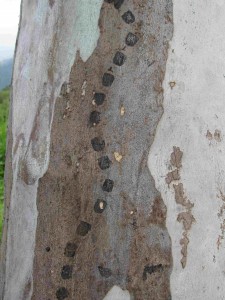
Pattern on Eucalyptus Bark (© Magi Nams)
Some of these views were close-ups of eucalyptus bark decorated with stamp-like designs or wrinkled at a branch joint.
But the most stirring views were long ones, of distant hills smeared by royal blue rainclouds, of the city’s downtown nestled near the eastern slope of Castle Hill, of the river that lends so much character, so much beauty to this city. I made quick photographic grabs at all these views and got them home in my pocket a few minutes before the skies opened.
Although Townsville is located in the dry tropics, it receives 1136 millimetres of rainfall annually.1 Paluma and Cairns, in the wet tropics, record about 1600 millimetres2 and just over 2 metres,3 respectively, of rain each year. Tully, located 200 kilometres north of Townsville in prime sugarcane and orchard country, collects over 4 metres of rain annually (record annual fall of 7.9 metres) and boasts that it’s the wettest inhabited place in Australia.4
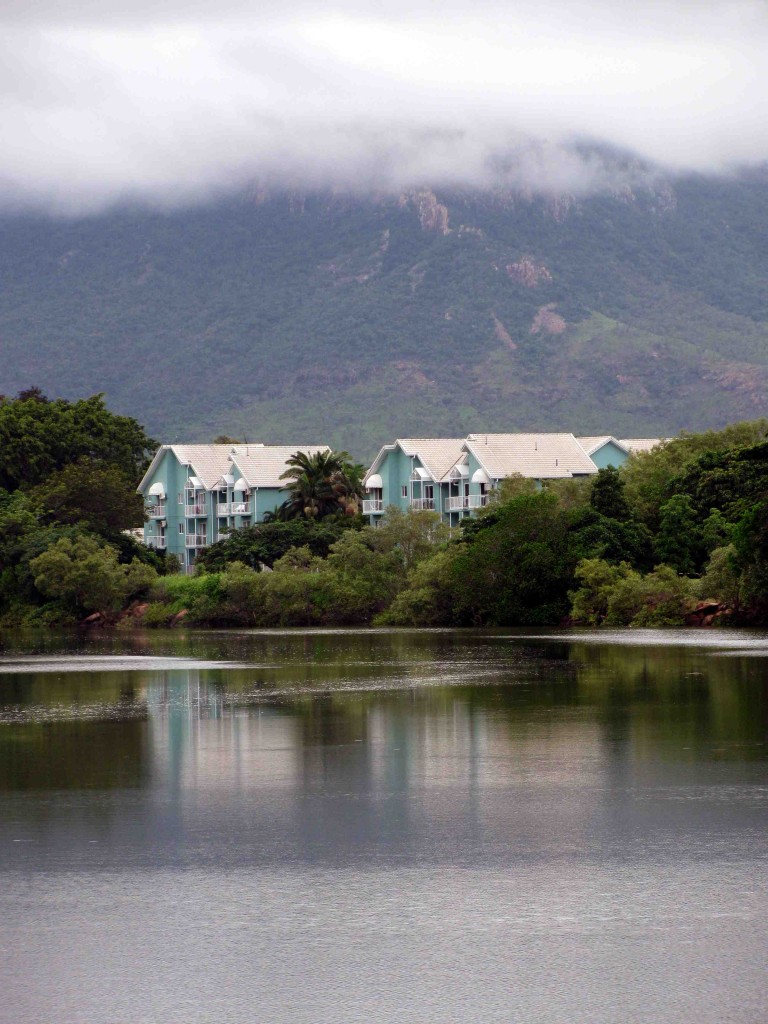
Ross River, Blue Units & Mount Stuart (© Magi Nams)
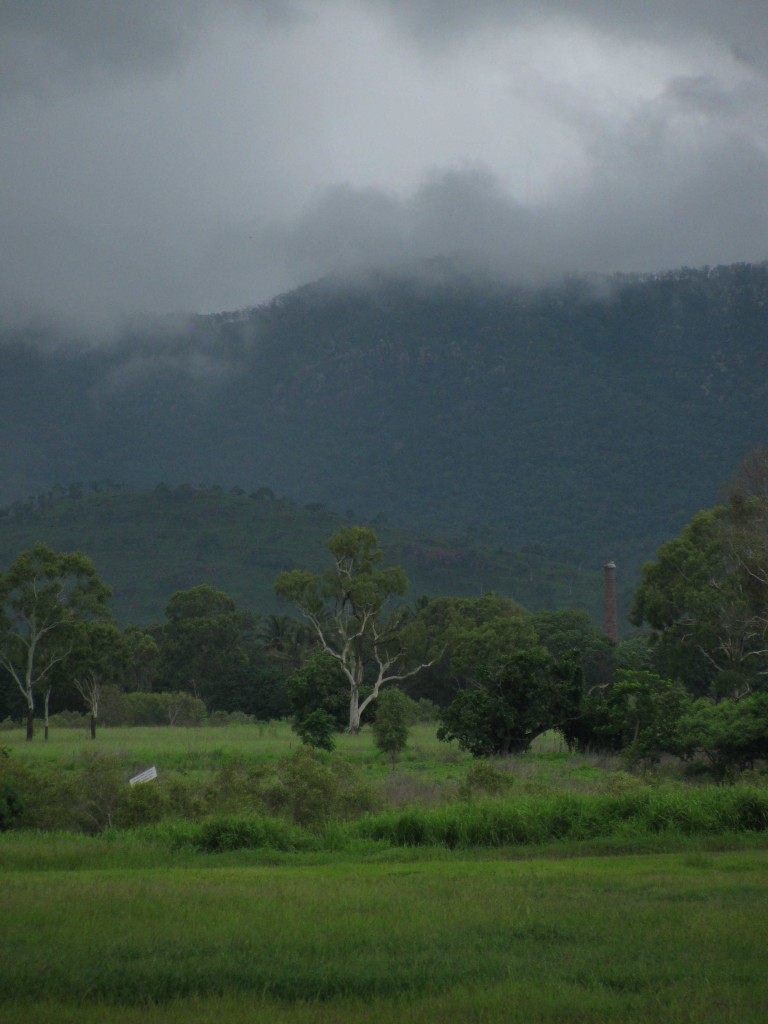
Storm Clouds Over Townsville (© Magi Nams)
Curious about the country as a whole, I researched annual rainfalls for state and territorial capitals and learned that Australia’s north and east coasts are definitely the wettest parts of the continent. Darwin, capital of the Northern Territory, reported an annual rainfall of 1666 millimetres,5 while Brisbane, capital of Queensland, and Sydney, capital of New South Wales, reported 1189 millimetres and 1220 millimetres, respectively.5 In contrast, the southern and western state capitals of Melbourne (Victoria), Adelaide (South Australia), Perth (Western Australia), and Hobart (Tasmania), as well as the federal capital of Canberra, all reported total annual rainfalls only roughly half as great, in the range of 550 to 870 millimetres.5 Alice Springs, which is not any kind of capital, but is located in desert country in the geographical centre of the continent, reported 274 millimetres of precipitation annually.5 I also learned that it’s not uncommon for inland desert and arid grassland areas to suffer severe droughts, some of which last for several seasons.6 This may be the reason most of Australia’s population is concentrated in or near coastal areas.
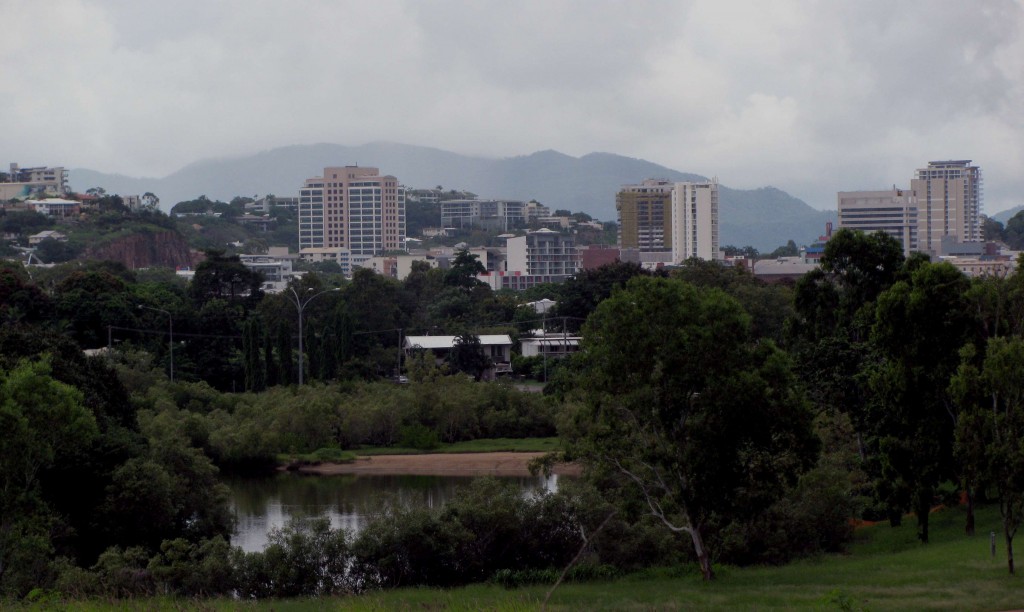
Downtown Townsville viewed from Bicentennial Park (© Magi Nams)
At 5 p.m., by which time Townsville’s downpours had diminished to drizzle, I hopped on my bike and rode hard for the fitness track on the river parkway. Coincidentlally, Vilis joined me there, and we grunted and panted on the assorted machines while laughing kookaburras in pale gum trees guffawed at our exertions. Such is the pursuit of fitness in the tropics.
References:
1. Australian Government, Bureau of Meteorology. Townsville Area Climate, Statisticss Townsville Aero. © Commonwealth of Australia 2010, Bureau of Meteorology. Accessed 23-Nov-2010. http://www.bom.gov.au/weather/qld/townsville/climate.shtml
2. Wet Tropics Management Authority. Wet Tropics things to do: Places and drives – The Southern Tropics – Paluma. © 2001-2010 by Wet Tropics Management Authority. Accessed 23-Nov-2010. http://www.wettropics.gov.au/ttd/ttd_paluma_parks.html
3. Australian Government, Bureau of Meteorology. Climate Statistics for Australian Locations, Summary Statistics Cairns Aero. © Commonwealth of Australia 2010, Bureau of Meteorology. Accessed 23-Nov-2010. http://www.bom.gov.au/climate/averages/tables/cw_031011.shtml
4. Wikipedia. Tully, Queensland. Updated 5-Oct-2010. Accessed 23-Nov-2010. http://en.wikipedia.org/wiki/Tully,_Queensland
5. Australian Government, Bureau of Meteorology. Climate Education: Australia – Climate of Our Continent. © Commonwealth of Australia 2010, Bureau of Meteorology. Accessed 23-Nov-2010. http://www.bom.gov.au/lam/climate/levelthree/ausclim/zones.htm
6. Australian Government, Bureau of Meteorology. Living with Drought. © Commonwealth of Australia 2010, Bureau of Meteorology. Accessed 23-Nov-2010. http://www.bom.gov.au/climate/drought/livedrought.shtml

